Abstract
1. Unit activity was recorded from single and few fibre preparations in a cardiac branch of the right vagus nerve of the cat.
2. Increases in blood pressure mediated solely by the right carotid sinus nerve produced bradycardia when all other nerves to the heart had been cut. Myelinated fibres in the cardiac branch of the right vagus nerve were reflexly activated by the same procedure.
3. The fibres were silent when blood pressure was below 140-150 mm Hg. As the pressure began to rise, they discharged phasically with the cardiac cycle. At pressures greater than 180 mm Hg, the discharge was continuous attaining maximum rates of 40/sec.
4. Stimulation of carotid body chemoreceptors also reflexly excited these fibres, as did stimulation of baroreceptors in both the left carotid sinus and aortic arch. Afferent fibres in the left vagus discharging in response to changes in blood pressure reflexly excited the cardiac efferent fibres. Increases in phrenic motoneurone discharge coincided with inhibition of these fibres. Electrical stimulation of the glossopharyngeal nerve also produced inhibition.
Full text
PDF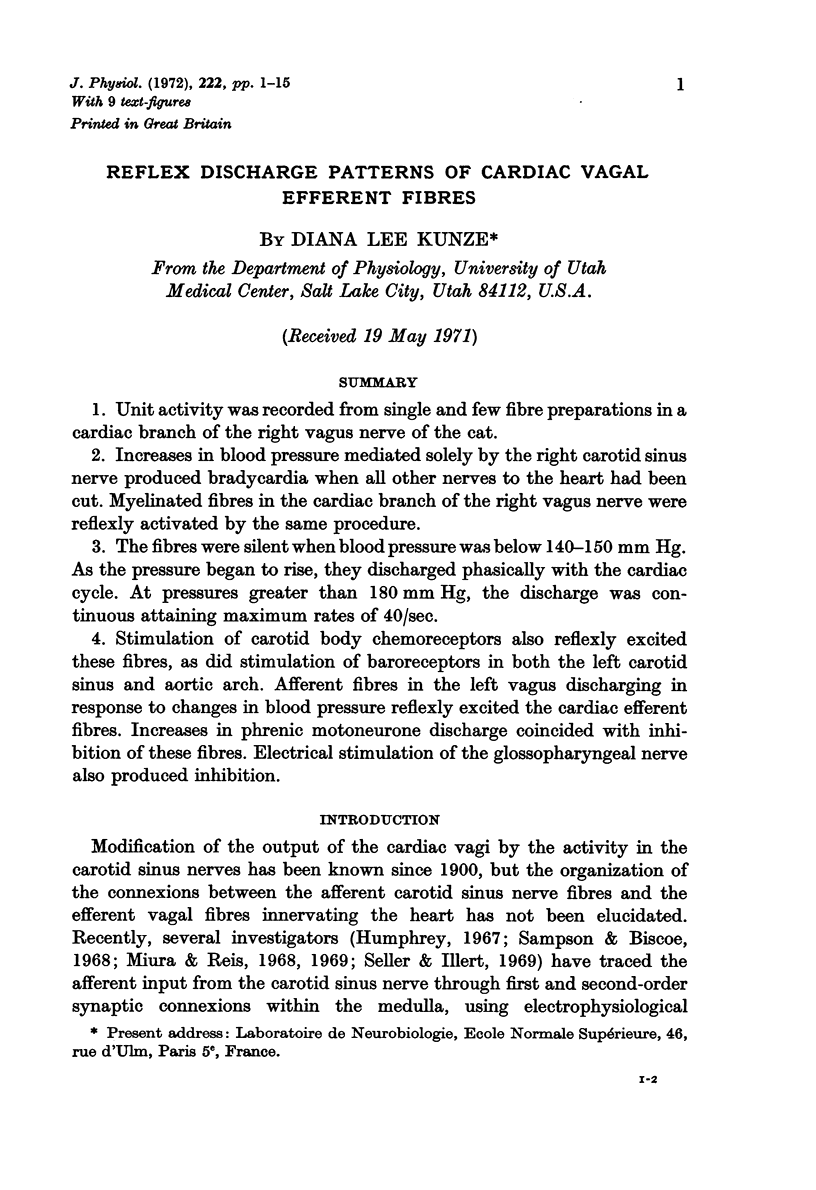
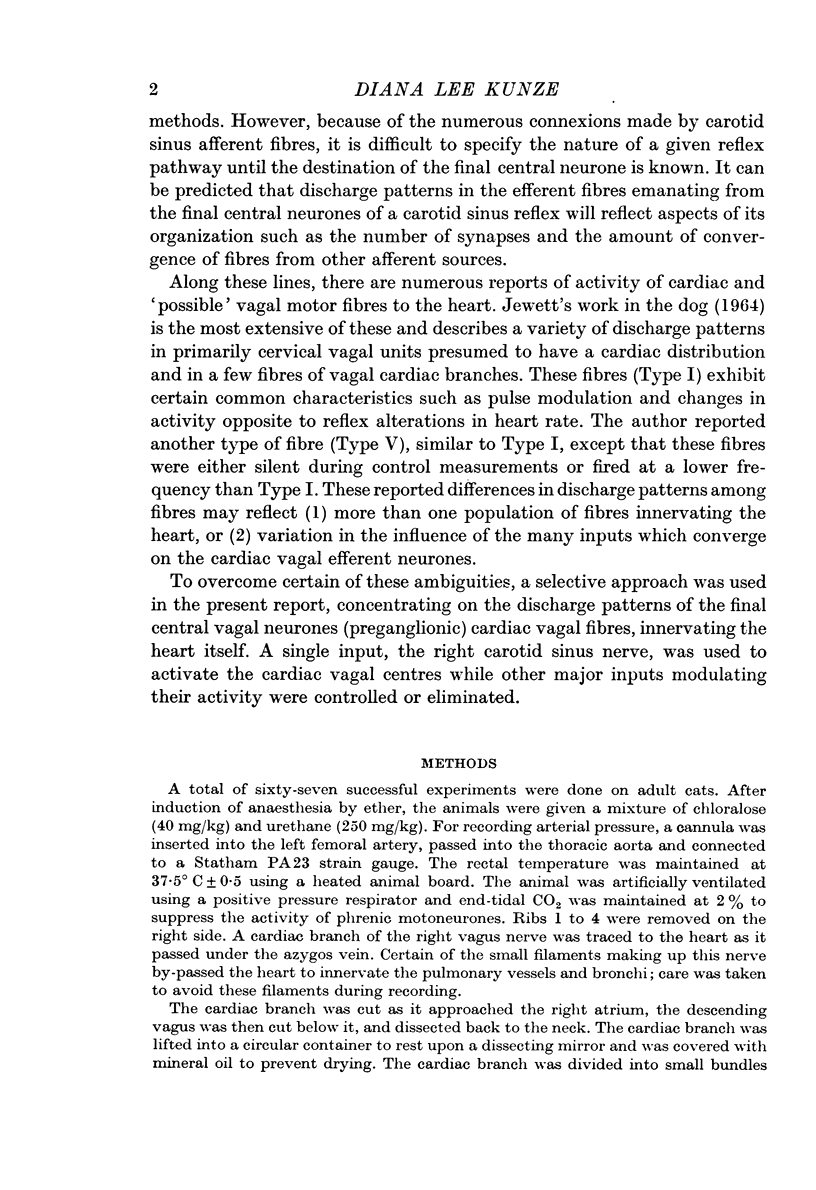
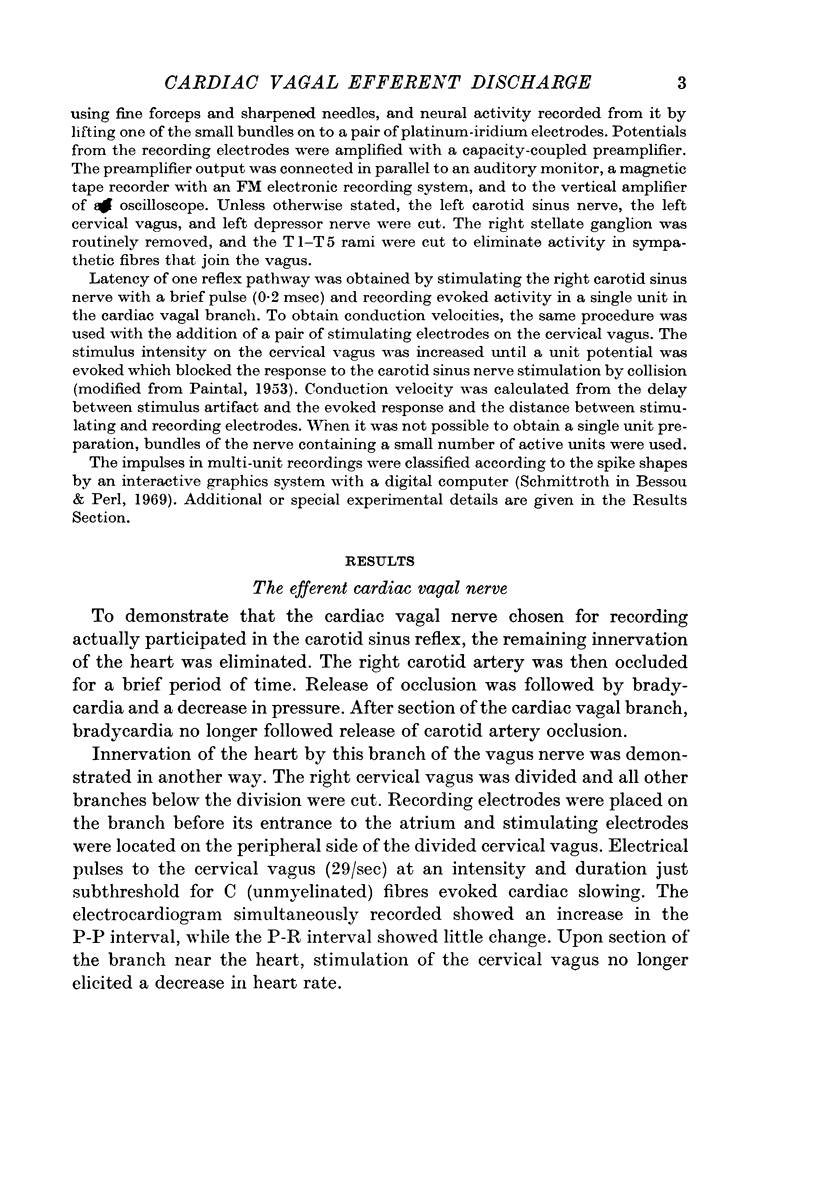
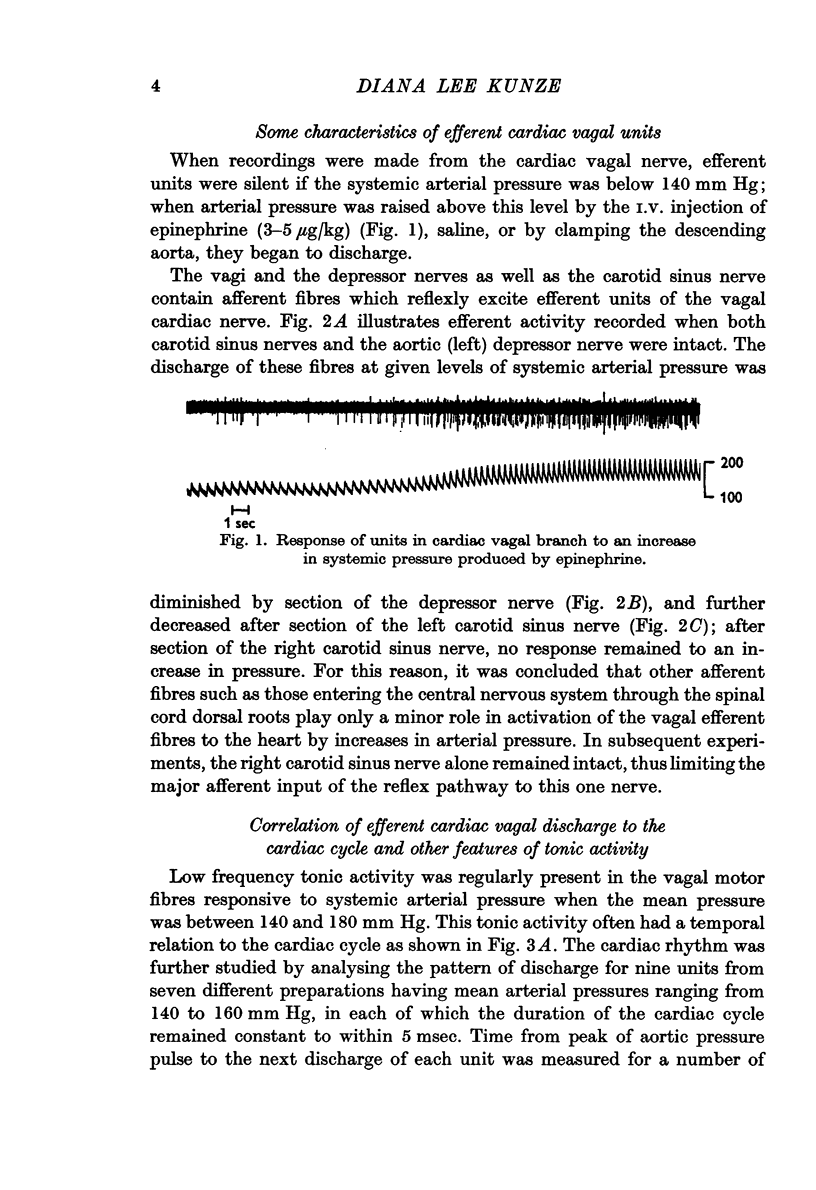
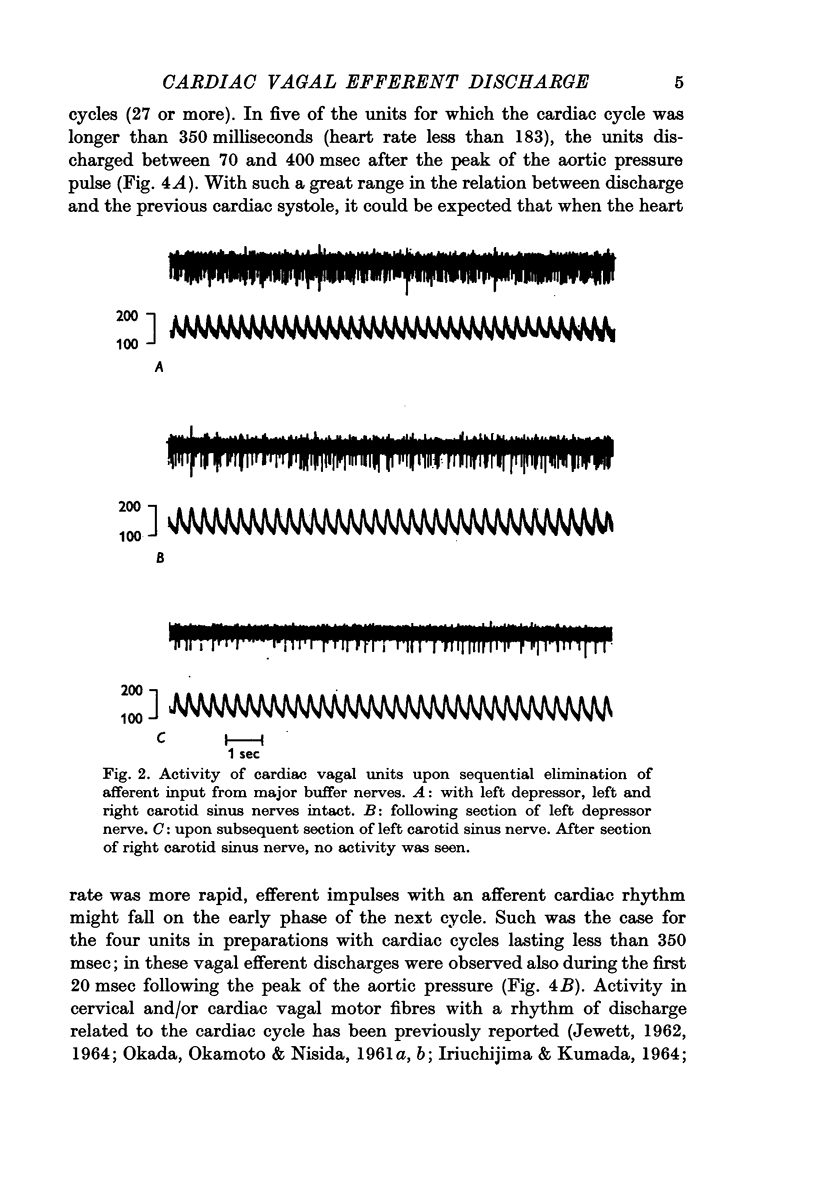
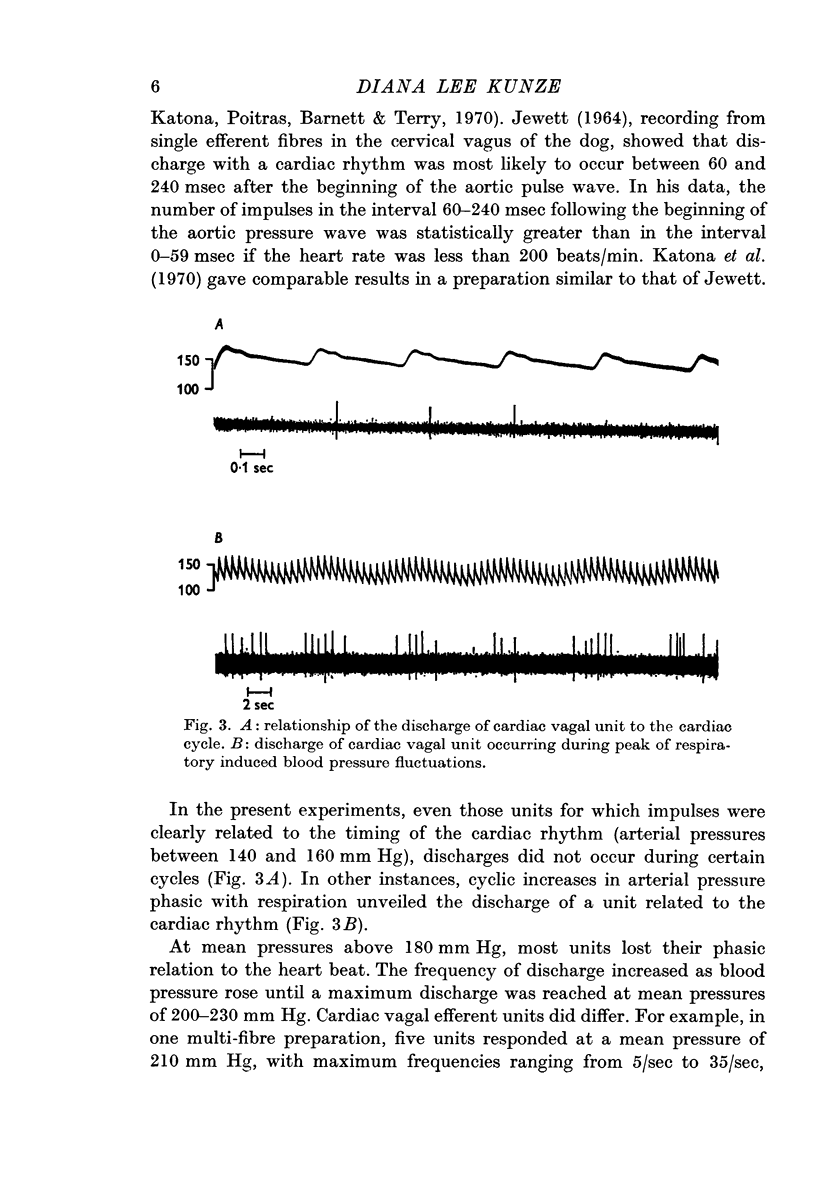
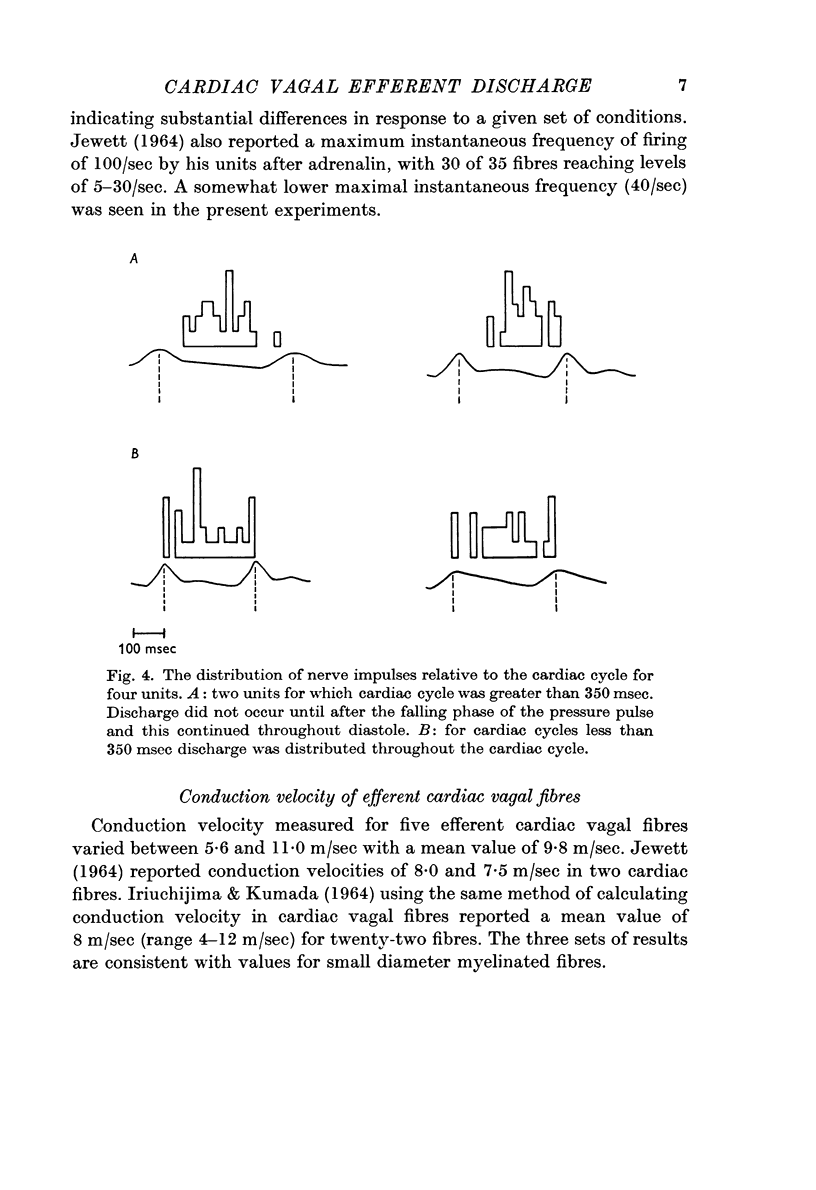
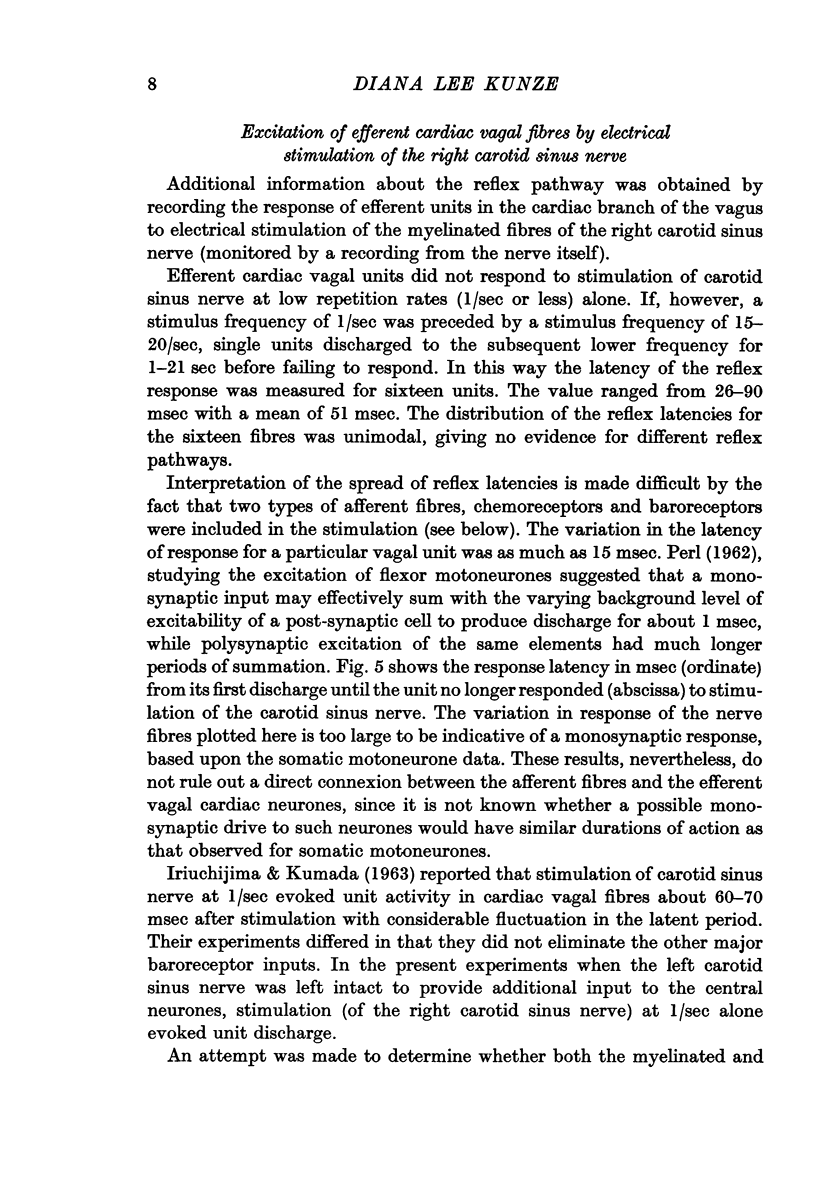
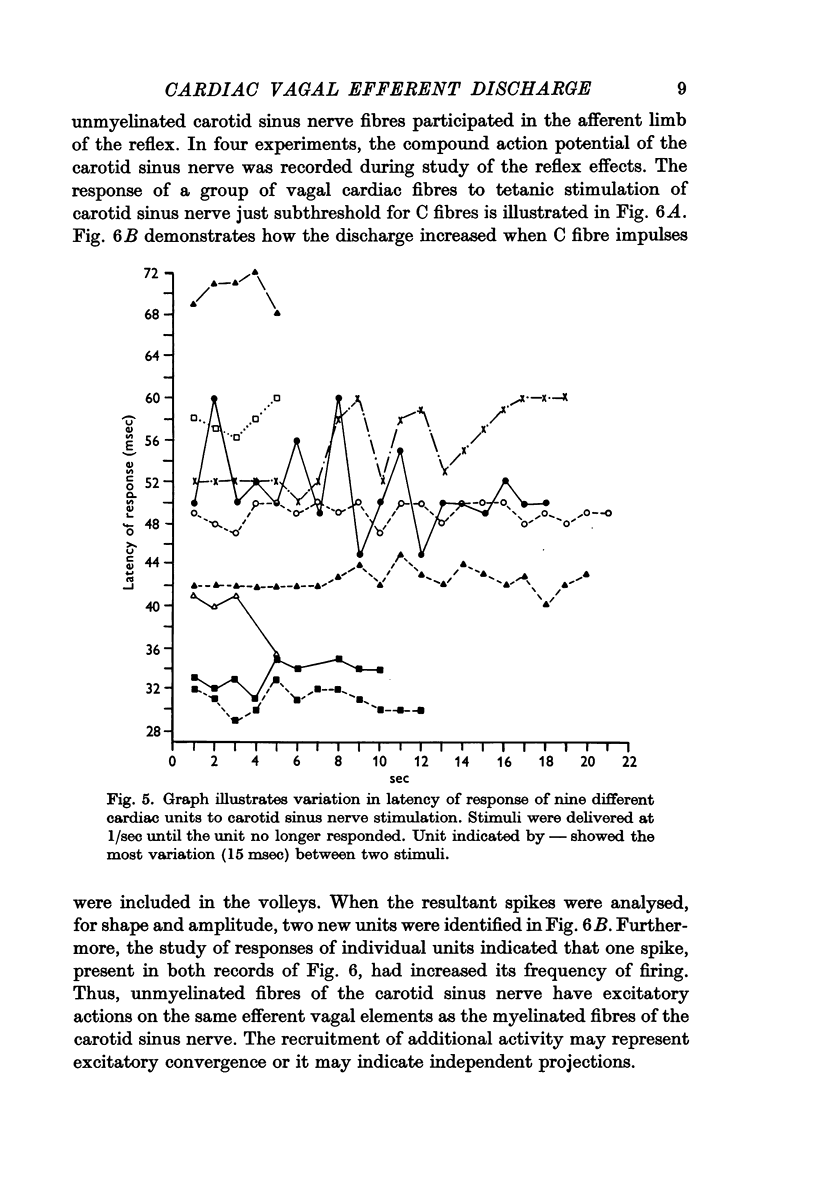
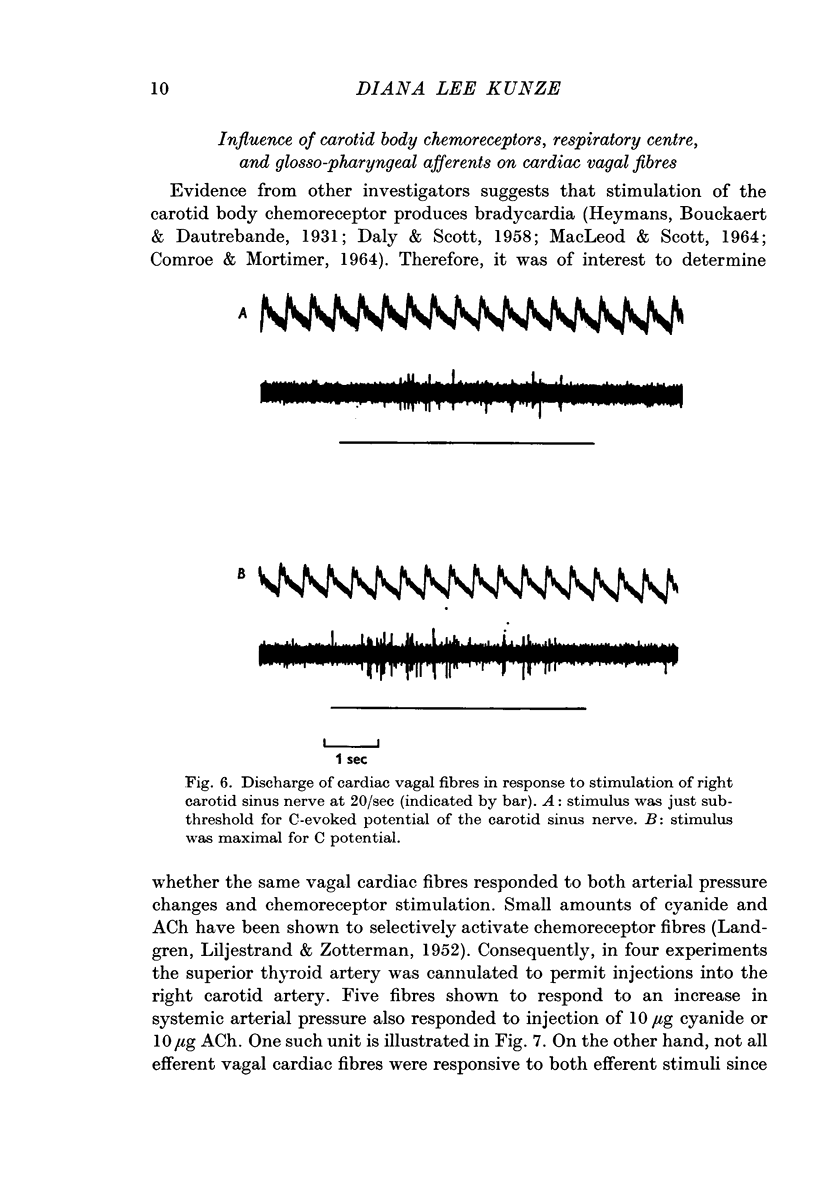
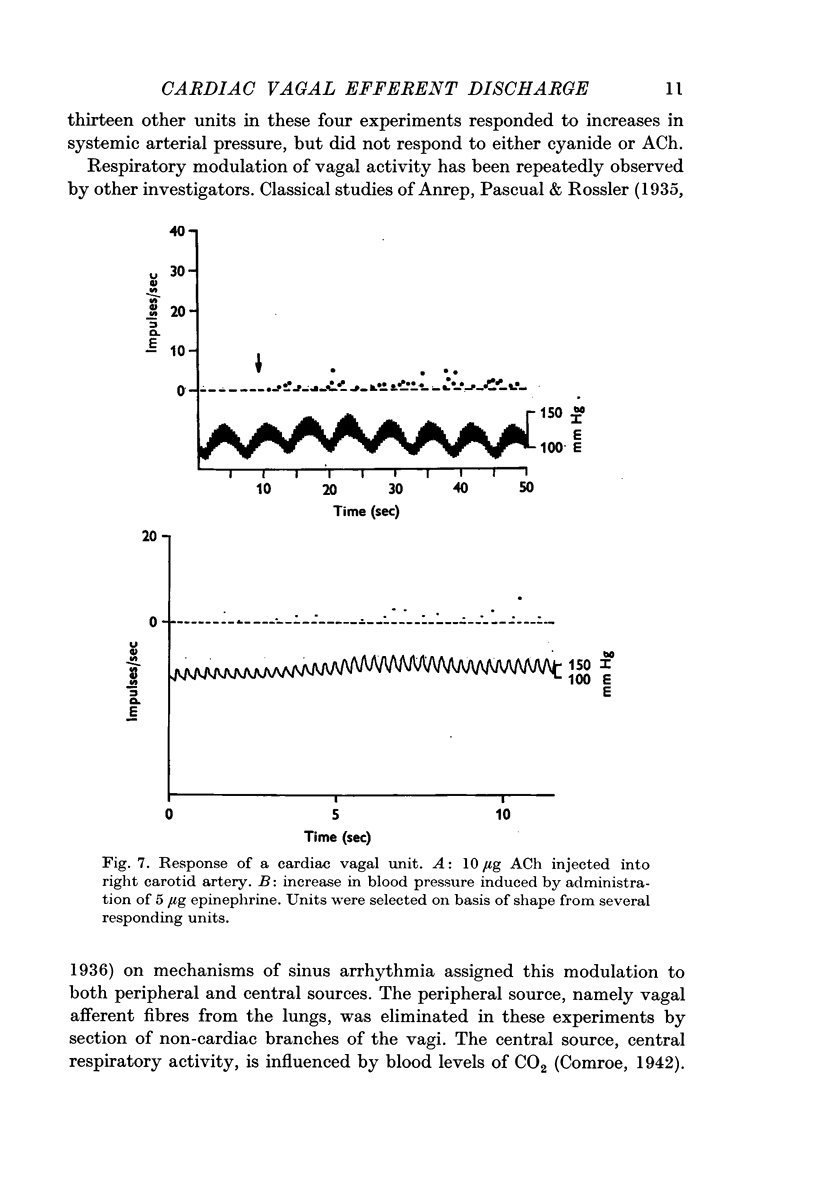
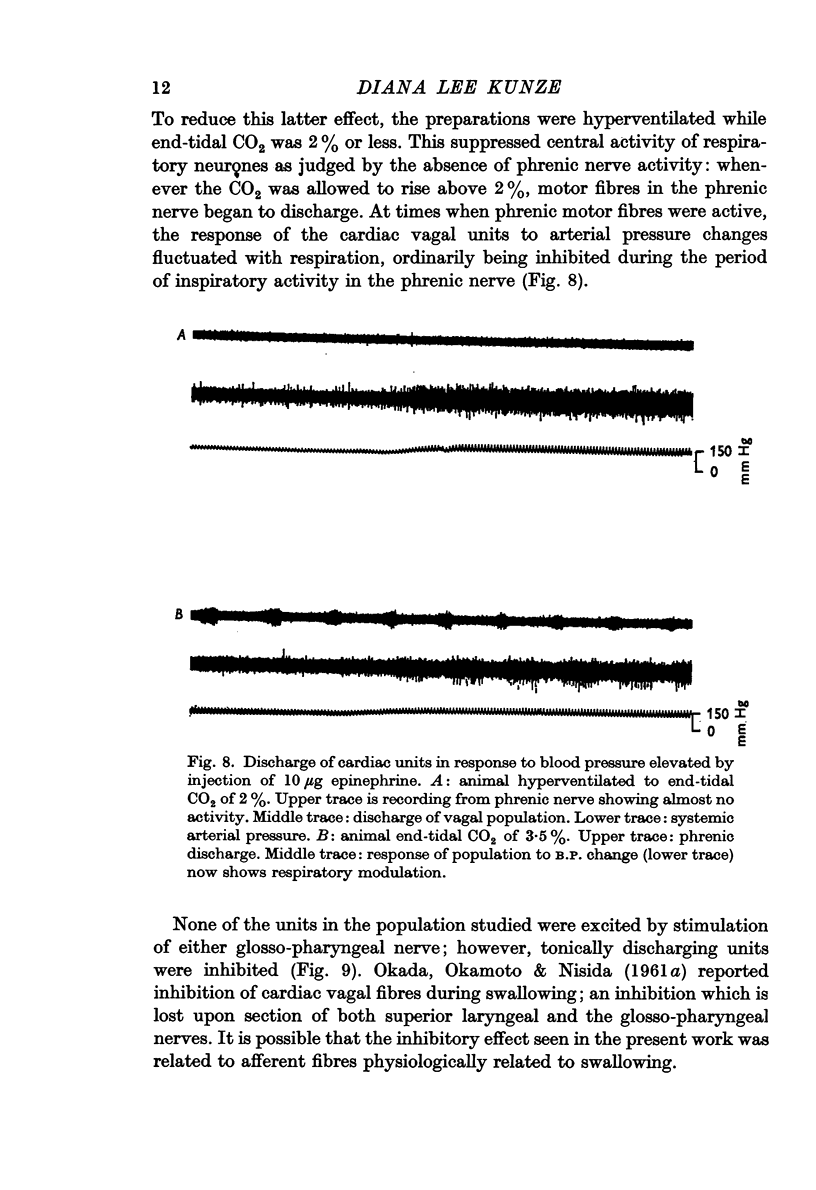
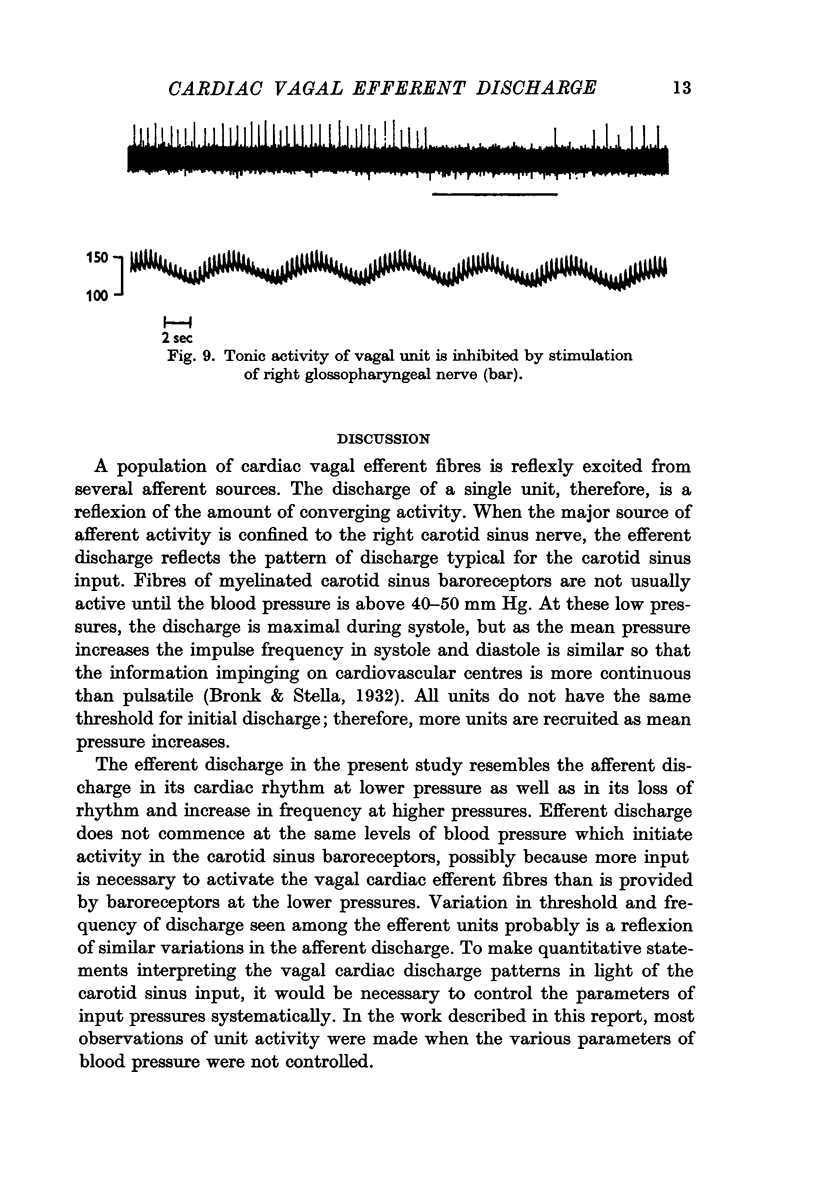
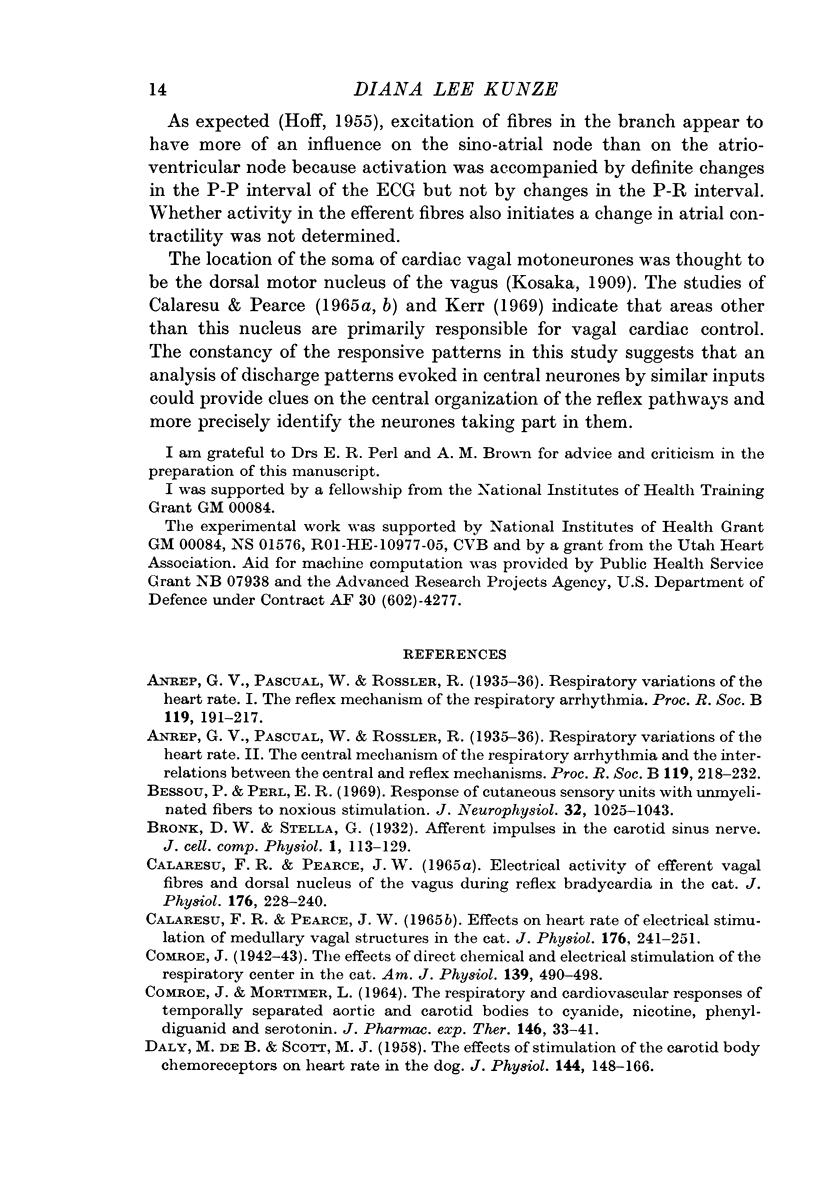
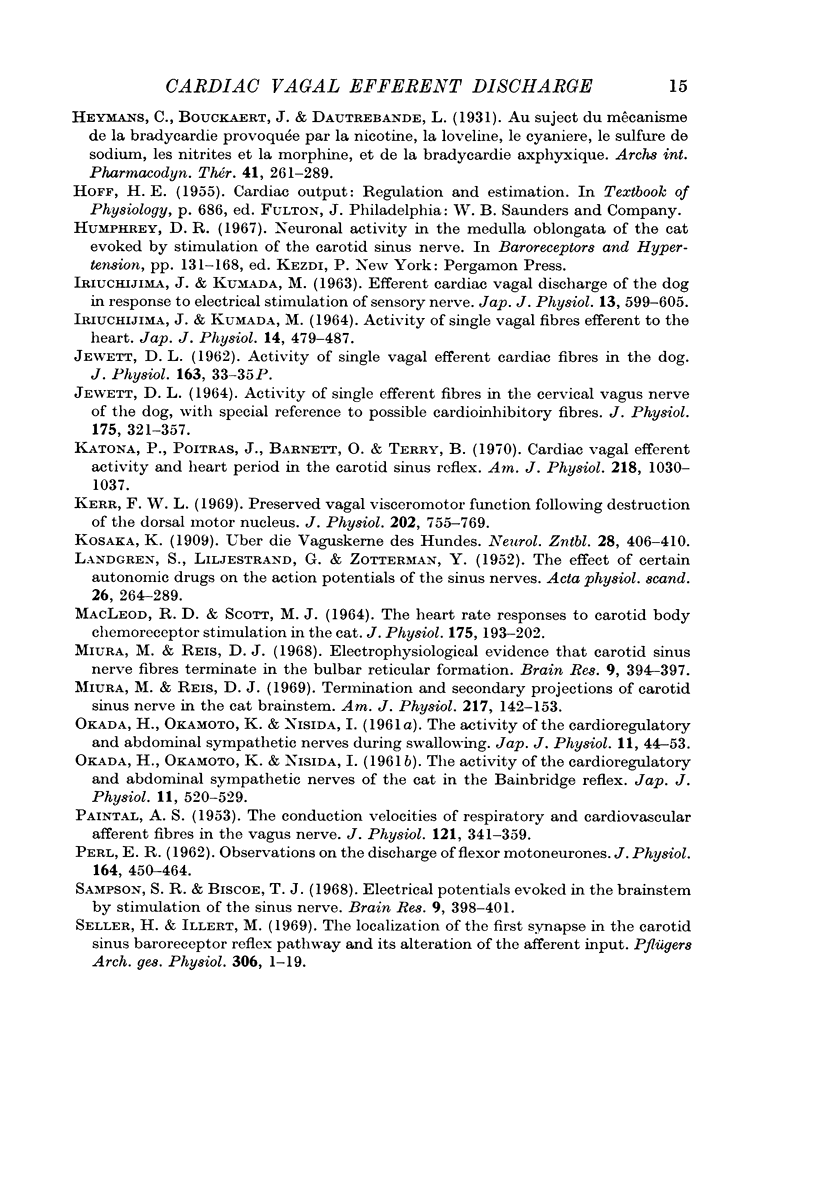
Selected References
These references are in PubMed. This may not be the complete list of references from this article.
- Bessou P., Perl E. R. Response of cutaneous sensory units with unmyelinated fibers to noxious stimuli. J Neurophysiol. 1969 Nov;32(6):1025–1043. doi: 10.1152/jn.1969.32.6.1025. [DOI] [PubMed] [Google Scholar]
- CALARESU F. R., PEARCE J. W. EFFECTS ON HEART RATE OF ELECTRICAL STIMULATION OF MEDULLARY VAGAL STRUCTURES IN THE CAT. J Physiol. 1965 Jan;176:241–251. doi: 10.1113/jphysiol.1965.sp007547. [DOI] [PMC free article] [PubMed] [Google Scholar]
- CALARESU F. R., PEARCE J. W. ELECTRICAL ACTIVITY OF EFFERENT VAGAL FIBRES AND DORSAL NUCLEUS OF THE VAGUS DURING REFLEX BRADYCARDIA IN THE CAT. J Physiol. 1965 Jan;176:228–240. doi: 10.1113/jphysiol.1965.sp007546. [DOI] [PMC free article] [PubMed] [Google Scholar]
- COMROE J. H., Jr, MORTIMER L. THE RESPIRATORY AND CARDIOVASCULAR RESPONSES OF TEMPORALLY SEPARATED AORTIC AND CAROTID BODIES TO CYANIDE, NICOTINE, PHENYLDIGUANIDE AND SEROTONIN. J Pharmacol Exp Ther. 1964 Oct;146:33–41. [PubMed] [Google Scholar]
- DE DALY M. B., SCOTT M. J. The effects of stimulation of the carotid body chemoreceptors on heart rate in the dog. J Physiol. 1958 Nov 10;144(1):148–166. doi: 10.1113/jphysiol.1958.sp006092. [DOI] [PMC free article] [PubMed] [Google Scholar]
- IRIUCHIJIMA J., KUMADA M. ACTIVITY OF SINGLE VAGAL FIBERS EFFERENT TO THE HEART. Jpn J Physiol. 1964 Oct 15;14:479–487. doi: 10.2170/jjphysiol.14.479. [DOI] [PubMed] [Google Scholar]
- IRIUCHIJIMA J., KUMADA M. EFFERENT CARDIAC VAGAL DISCHARGE OF THE DOG IN RESPONSE TO ELECTRICAL STIMULATION OF SENSORY NERVES. Jpn J Physiol. 1963 Dec 15;13:599–605. doi: 10.2170/jjphysiol.13.599. [DOI] [PubMed] [Google Scholar]
- JEWETT D. L. ACTIVITY OF SINGLE EFFERENT FIBRES IN THE CERVICAL VAGUS NERVE OF THE DOG, WITH SPECIAL REFERENCE TO POSSIBLE CARDIO-INHIBITORY FIBRES. J Physiol. 1964 Dec;175:321–357. doi: 10.1113/jphysiol.1964.sp007520. [DOI] [PMC free article] [PubMed] [Google Scholar]
- Katona P. G., Poitras J. W., Barnett G. O., Terry B. S. Cardiac vagal efferent activity and heart period in the carotid sinus reflex. Am J Physiol. 1970 Apr;218(4):1030–1037. doi: 10.1152/ajplegacy.1970.218.4.1030. [DOI] [PubMed] [Google Scholar]
- Kerr F. W. Preserved vagal visceromotor function following destruction of the dorsal motor nucleus. J Physiol. 1969 Jun;202(3):755–769. doi: 10.1113/jphysiol.1969.sp008839. [DOI] [PMC free article] [PubMed] [Google Scholar]
- LANDGREN S., LILJESTRAND G., ZOTTERMAN Y. The effect of certain autonomic drugs on the action potentials of the sinus nerve. Acta Physiol Scand. 1952 Sep 10;26(2-3):264–290. doi: 10.1111/j.1748-1716.1952.tb00909.x. [DOI] [PubMed] [Google Scholar]
- MACLEOD R. D., SCOTT M. J. THE HEART RATE RESPONSES TO CAROTID BODY CHEMORECEPTOR STIMULATION IN THE CAT. J Physiol. 1964 Dec;175:193–202. doi: 10.1113/jphysiol.1964.sp007511. [DOI] [PMC free article] [PubMed] [Google Scholar]
- Miura M., Reis D. J. Electrophysiological evidence that carotid sinus nerve fibers terminated the bulbar reticular formation. Brain Res. 1968 Jul;9(2):394–397. doi: 10.1016/0006-8993(68)90247-3. [DOI] [PubMed] [Google Scholar]
- Miura M., Reis D. J. Termination and secondary projections of carotid sinus nerve in the cat brain stem. Am J Physiol. 1969 Jul;217(1):142–153. doi: 10.1152/ajplegacy.1969.217.1.142. [DOI] [PubMed] [Google Scholar]
- OKADA H., OKAMOTO K., NISIDA I. The activity of the cardioregulatory and abdominal sympathetic nerves during swallowing. Jpn J Physiol. 1961 Feb 15;11:44–53. doi: 10.2170/jjphysiol.11.44. [DOI] [PubMed] [Google Scholar]
- OKADA H., OKAMOTO K., NISIDA I. The activity of the cardioregulatory and abdominal sympathetic nerves of the cat in the Bainbridge reflex. Jpn J Physiol. 1961 Oct 15;11:520–529. doi: 10.2170/jjphysiol.11.520. [DOI] [PubMed] [Google Scholar]
- PAINTAL A. S. The conduction velocities of respiratory and cardiovascular afferent fibres in the vagus nerve. J Physiol. 1953 Aug;121(2):341–359. doi: 10.1113/jphysiol.1953.sp004950. [DOI] [PMC free article] [PubMed] [Google Scholar]
- PERL E. R. Observations on the discharge of flexor motoneurones. J Physiol. 1962 Dec;164:450–464. doi: 10.1113/jphysiol.1962.sp007031. [DOI] [PMC free article] [PubMed] [Google Scholar]
- Sampson S. R., Biscoe T. J. Electrical potentials evoked in the brain stem by stimulation of the sinus nerve. Brain Res. 1968 Jul;9(2):398–402. doi: 10.1016/0006-8993(68)90248-5. [DOI] [PubMed] [Google Scholar]
- Seller H., Illert M. The localization of the first synapse in the carotid sinus baroreceptor reflex pathway and its alteration of the afferent input. Pflugers Arch. 1969;306(1):1–19. doi: 10.1007/BF00586608. [DOI] [PubMed] [Google Scholar]


